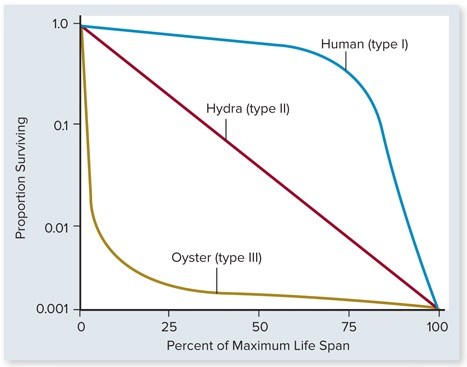 What often describes organisms with a Type III life history?
What often describes organisms with a Type III life history?
A. subject to low predation rates
B. at their carrying capacity
C. K-selected
D. idiopathic
E. r-selected
Answer: E
You might also like to view...
What results from the chemical reaction illustrated above? The reactants have no charge
A) a cation with a net charge of +1 and an anion with a net charge of +1 B) a cation with a net charge of -1 and an anion with a net charge of -1 C) a cation with a net charge of -1 and an anion with a net charge of +1 D) a cation with a net charge of +1 and an anion with a net charge of -1
Bacterial cells typically have ____ while eukaryotic cells have ____
a. a single circular chromosome; many linear chromosomes. b. several circular chromosomes; many linear chromosomes. c. one linear chromosome; many circular chromosomes. d. two circular chromosomes; numerous circular chromosomes depending on the species. e. numerous circular chromosomes depending on the species; many linear chromosomes.
How many years did it take for the world population to reach one billion?
a. 100,000 b. 500,00 c. 1 million d. 2 million e. 2.5 million
Netting modified for sandflies should also be useful in preventing malaria
Indicate whether the statement is true or false